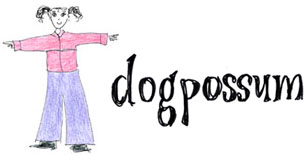April 30, 2004
Freeswing II
Australian Variations: Lindy Hop as a Contemporary Australian Vernacular Dance?
From the 1930s, lindy experienced a leap in popularity, living on social dance floors across the world, recorded in film and print for future generations. The 1950s brought rock n roll to the social dance floors of the world, and new directions for Afro-American artists. Soul, R n B, rock n roll, Motown, Funk, hip hop, rap, R n B again… jazz shifted from the vernacular to the realm of aficionados and musicians. Until the 1980s, when white dancers went searching for the forebears of swing. Contemporary lindy scenes are fond of the story of Frankie Manning’s rediscovery, his return from postal worker to international dancing celebrity. But despite its roots, its history as an Afro-American dance, lindy hop is now, primarily (particularly in Australia), an Anglo-European dance culture. Can lindy still be read as Afro-American vernacular dance, when it is danced in Sweden and New Zealand and Singapore? When the dancers are English and Australian and Korean? When the dancers are, in Australia, primarily white, middle class youth learning in schools and academies, rather than on the social floors of dance halls?
Jacqui Malone makes the point in her book Steppin’ on the Blues that vernacular dance is the expression in music and movement of everyday, ordinary life experiences. It could be argued, then, that lindy today, is no longer the vernacular dance of the 1930s Afro-American communities. It might be read more as the vernacular dance of mostly white, mostly middle class, mostly youth cultures around the globe, who come to lindy without the entrenched tradition of social partner dancing of their parents and grandparents. They are having to learn social partner dancing etiquette from scratch. They bring with them their day-to-day experiences with a vast universe of media - television, radio, internet, newspapers, magazines. They have come to lindy with personal histories with disco, rock n roll, hip hop, techno, reggae…
The lindy hop communities of Australia - of Melbourne in particular - are barely ten years old. They are, in effect, having to remake a social dance culture along the lines of 1930s Harlem, but in a contemporary context, with the politics and ideologies of the21st century. Lindy hop, while it might be becoming a new type of vernacular dance - a vernacular dance that is globally lindy, but locally… Australian, New Zealand, European, Asian - and is in the largest part, a product of the leisure industry. Students buy classes in lindy. They learn to dance lindy from teachers, in class-settings, in their carefully apportioned leisure time, wearing their use-specific dance shoes, dance to recordings which are the product of multinational recording companies.
Malone writes that in Afro-American communities, “black youth and adults generally don’t take classes to learn social dance - their academies are dance halls, house parties, social clubs, and the streets. In fact, formal dance studios are usually years behind the real source of America’s social dances: the black community”(28). That is the tradition of Afro-American dance. Learning to dance, to develop ‘style’ as an individual, rather than working to ‘perfect’ a specific ‘brand’ of dance.
It seems, then, that the tradition of lindy hop - as vernacular dance - sits uncomfortably with the ethos of schools and institutionalised, structured learning in Melbourne. But perhaps this is the truest expression of contemporary Australian culture. Dance becomes a product to be bought, dancing is to be mastered, to paid for by the class and accumulated as capitol. In Melbourne, this seems to increasingly be the case, as the emphasis shifts from social dancing and teaching social dancing etiquette (in itself an oddly Anglo-European concept) to promoting competitions in the ballroom dancing and VRDA tradition, teaching choreographed performance dancing increases, and ‘Balls’ become forums for the display of product, the ‘branding’ of dance and the commodification of knowledge.
And while all this is depressing when the history of lindy is revisited, perhaps lindy hop culture and lindy hop communities in Australia are a pathway to more satisfying, inclusive cultural practice? Writing with the fervour of an idealist in the throes of passion, could lindy hop - social dancing, social lindy - not hold the potential for undoing the worst nastiness of contemporary capitalist culture? If vernacular dance can serve as resistance to oppression, if derision can be empowering, if the ecstatic state of bodies in motion can lift the spirit of the enslaved, could not a few turns on the social dance floor in down-town Melbourne not serve as a raised fist to the ever-tightening grasp of homogenising dance-factories?
Malone, Jaqui. Steppin' on the Blues: The Visible Rhythms of African American Dance. Urbana and Chicago: University of Illinois Press, 1996.
